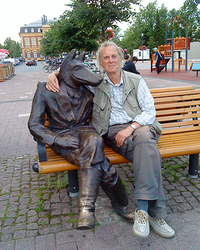
Andrew Chesterman was born in England but moved to Finland in 1968 and has been based there ever since, mainly at the University of Helsinki, where his main subjects have been English and translation theory. In 2010, he retired from his post as professor of multilingual communication, but continues to be active in Translation Studies, refereeing, writing, and giving occasional lectures. His main research interests have been in contrastive analysis; translation theory, translation norms, universals, and ethics; and research methodology. He was CETRA Professor in 1999 (Catholic University of Leuven), and has an honorary doctorate from the Copenhagen Business School.
Main books: On Definiteness (1991, CUP); Memes of Translation (1997, Benjamins); Contrastive Functional Analysis (1998, Benjamins); with Emma Wagner: Can Theory Help Translators? A Dialogue between the Ivory Tower and the Wordface (2002, St. Jerome Publishing); and with Jenny Williams: The Map. A Beginners’ Guide to Doing Research in Translation Studies (2002, St. Jerome Publishing).
Moving conceptual boundaries: so what?
Any research, whether empirical or not, involves conceptual analysis and interpretation. In TS, there are frequent proposals for conceptual innovation: new concepts, new distinctions, new superordinate categories, new taxonomies, new ways of seeing things. I take all these to be interpretive hypotheses. As such, they cannot be empirically falsified, but they nevertheless can and should be tested pragmatically, in terms of costs and benefits and consequences, and in comparison with alternatives. I will take a sometimes critical look at some recent proposals, and at the use of the “hermeneutic ‘as’” more generally in TS. Conceptual arguments can sometimes be framed in misleading factual rhetoric, giving rise to non-desirable consequences in the form of fallacious inferences.